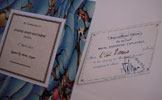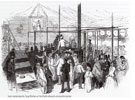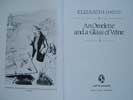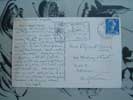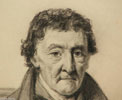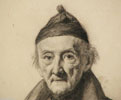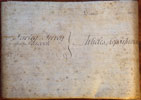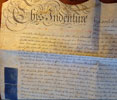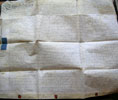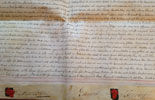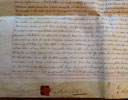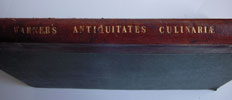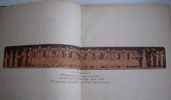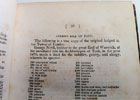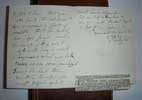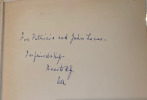An esteemed 13th century Royal cook.
In the household of Eleanor of Provence, Queen of England, consort of King Henry III, c.1223-91.
The manuscript is very fine vellum. 242 x 253mm. 24 lines, in a handsome book-hand medieval script in Latin. Indented chirograph deed cut in two proven parts, with one part given to each party. Without a seal. 2 small wormholes, folds, slightly creased, small stain, slightly browned but in remarkable condition bearing in mind the date; 1259. Housed in a strong cardboard folder with marbled paper and large label.
- A charter agreement between Hugh Gernegan and Henry Lovel, the greatly favoured cook of her ladyship the Queen. Hugh has demised to Henry his manor of 'Harpefeld' (actual now: Harpsfield, Hatfield, Hertfordshire) with all its tenants' homages, lands and services; also referring to a rent in St. Albans. as received from Hugh and Ela his wife to farm [lease] for four years from the feast of All Saints to Henry III on 1st. Nov. 1259, for ten marks [£6 13s. 4d.] a year, payable in the King's hall at Westminster. Witnesses: Sir William de Hecham, Robert de Ehelniaresford and others. Quite how Henry Loval came to receive the contents of this charter is not known. Another great gift from the King to Henry Lovel is also mentioned in the Fine Rolls of Henry III. - "5 November 1256, For Master Henry Lovel. The king has granted by his charter to Master Henry Lovel, the queen's cook, a certain place at Crochefeld' in the parish of Bray which contains ten acres and the fourth part of one acre by the king's perch of 20 feet to have to him and his heirs forever, rendering therefor 41d. per annum to the bailiff of Bray who shall be at that time for the king's use for all service etc." We see here that Lovel was already relatively very well-off even before the receiving the contents of the velum manuscript above. - The fine rolls in the reign of King Henry III 1216–1272, was an agreement to pay the king a sum of money for a specified concession. The rolls on which the fines were recorded, provide the earliest systematic evidence of what people and institutions across society wanted from the king and he was prepared to give. The earliest surviving rolls compiled by the English royal chancery exist in almost continuous sequence from 1199. They are preserved in The National Archives at Kew. For Henry III’s reign there are fifty-six rolls, as this one also, are written in Latin on parchment. Since Henry’s regnal year began on 28 October, each roll runs from 28 October in one calendar year to 27 October in the next. Over the course of the King's reign the rolls expanded greatly in length, many having a dozen or more membranes and containing over 30,000 words. They open a large window onto the politics, government, economy and society of England in the hinge period between the establishment of Magna Carta at the start of Henry’s reign and the parliamentary state which was emerging at its end. Eleanor of Provence (c. 1223 – 24/25 June 1291) was a French noblewoman who became Queen consort of England as the wife of King Henry III from 1236 until his death in 1272. She was married at 14 years old. She served as regent of England during the absence of her spouse in 1253 who was away fighting in France. (It was also rumoured that at this time Eleanor granted Henry Lovel a small forested estate). Although she was completely devoted to her husband, and staunchly defended him against the rebel Simon de Montfort, 6th Earl of Leicester, she was very much hated by the Londoners. This was because she had brought many relatives with her to England in her retinue; these were known as "the Savoyards", and they were given influential positions in the government and realm. On one occasion, Eleanor's barge was attacked by angry Londoners who pelted her with stones, mud, pieces of paving, rotten eggs and vegetables. Eleanor had five children, including the future King Edward I of England. She also was renowned for her cleverness, skill at writing poetry, and as a leader of fashion. In 1272 Henry died, and their son Edward became king. She remained in England as queen dowager, and raised several of her grandchildren. She retired in 1286 to Amesbury Priory in Wiltshire, eight miles north of Salisbury. Eleanor died on 24/25 June 1291 at the priory and was buried there. The site of her grave is unknown, making her the only English queen without a marked grave. Her heart was taken to London where it was buried at the Franciscan priory of Greyfriars. It is not recorded when Henry Lovel's period of service started or finished in the Royal kitchens. What is clear, is that he must have been very highly regarded as a servant and cook. He brings to mind Patrick Lamb, another famous royal cook, whose fine cookery book of 1710 (ref:# 11025 on this web-site) mirrors the same royal patronage that elevated Henry Lovel's position in life. Check online; Item # 56 in the Fine Roll C 60/54, 41 Henry 111 -- https://frh3.org.uk/content/calendar/roll_054.html.


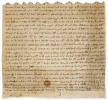

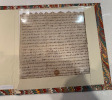
click on image to enlarge

Antiquarian category
ref number:
11050 